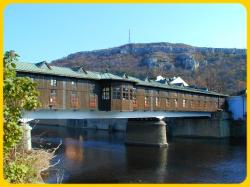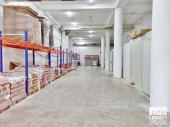|
| Revival and Baroque Architecture in the Balkan Mountain |
|
|
 Lovech is full of views fit for postcards, it is quiet and stands under the elevated mountainous land, which constantly reminds you of your proximity to nature. July is one of the most pleasant months in which to visit this splendid and very Bulgarian town, as cool breezes blow from the peaks of the Balkan Mountain , the houses’ gardens are covered in the deep shade of tree leaves and very few pleasures can compare with a lunch on a wooden table in one of them.
Lovech is full of views fit for postcards, it is quiet and stands under the elevated mountainous land, which constantly reminds you of your proximity to nature. July is one of the most pleasant months in which to visit this splendid and very Bulgarian town, as cool breezes blow from the peaks of the Balkan Mountain , the houses’ gardens are covered in the deep shade of tree leaves and very few pleasures can compare with a lunch on a wooden table in one of them.
You sink into a blissful lazy afternoon in the greenery of the old town of Lovech, Varosha, and adopt a carefree existence, guarded by the fortress wall, the revolutionary Vasil Levski and the mountain, which has given its name to the entire Balkan Peninsula.
Not be missed:
Seeing the Covered Bridge with new eyes: The covered bridge built by the Bulgarian Revival architect and sculptor Kolyo Ficheto is something that one should see at least twice in one’s life – once before and once after seeing its Florentine counterpart, Ponte Vecchio. In the least, to make sure that it isn’t more impressive than Europe’s best known Medieval bridge.
What makes the one in Lovech different are the buildings on its two sides, the soft traces of socialism and the way it is currently used. The Italian one, too, is in the hands of tradesmen, but they only stretch as far as the small space they’ve had at their disposal since the bridge was built lets them, and aren’t allowed to make any changes or improvements to it. In Lovech, that isn’t quite the case – from the stores for souvenirs and jewellery to those for pizza by the slice, the venues have an unsettlingly modern look and were actually added on during the bridge’s last reconstruction. This partly kills the atmosphere, but the series of wooden columns and white domes contribute to the authenticity of the place. The original bridge over the Osam River, built in 1874, burnt to the ground in 1925. The current structure is a replica of it from 1931, with slight additions from the 1970s.
Seeing the erstwhile splendour of Lovech in Varosha: With its church, ethnographic complex and the monument of the revolutionary Vasil Levski, this little quarter, built in the Revival architecture style, is the most memorable part of the town. You don’t need too much imagination in order to understand why, between the twelfth and the eighteenth centuries, Lovech was called Altın, or ‘Golden’, in the Ottoman Empire’s chronicles. Its merchants went around Europe and the near parts of the Orient and in 1768, a wealthy enough man from the town, Hadji Vasilii, arranged for the decoration of the John the Baptist chapel of the Zograph Monastery in Mount Athos.
http://www.balkantravellers.com |
| Monday, Nov 21, 2011 |
|
|
|
|
| » RENTALS |

|
|
|
| Commercial |
€ 1 280 |
|
| Location: |
Veliko Tarnovo |
|
|

|